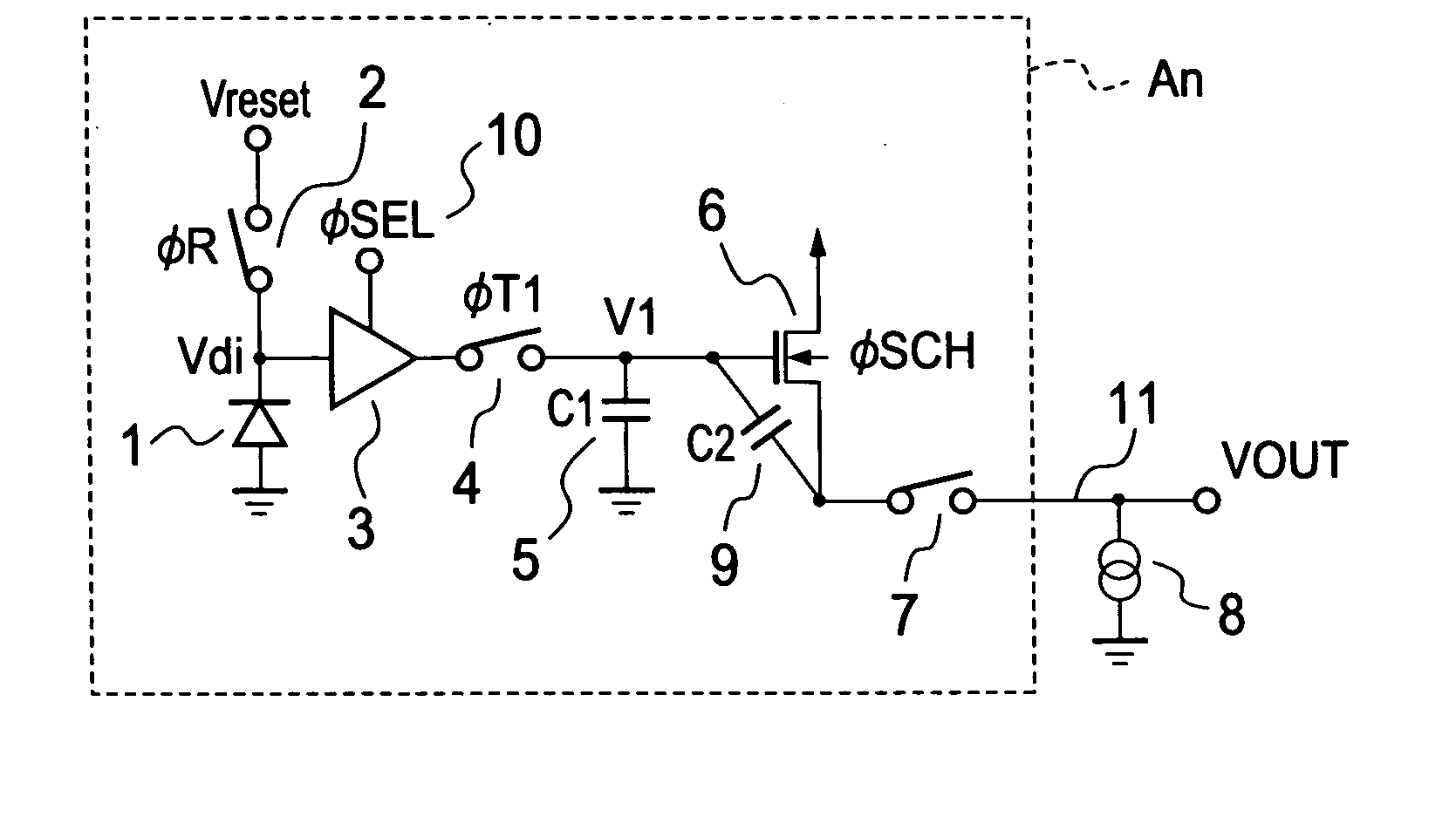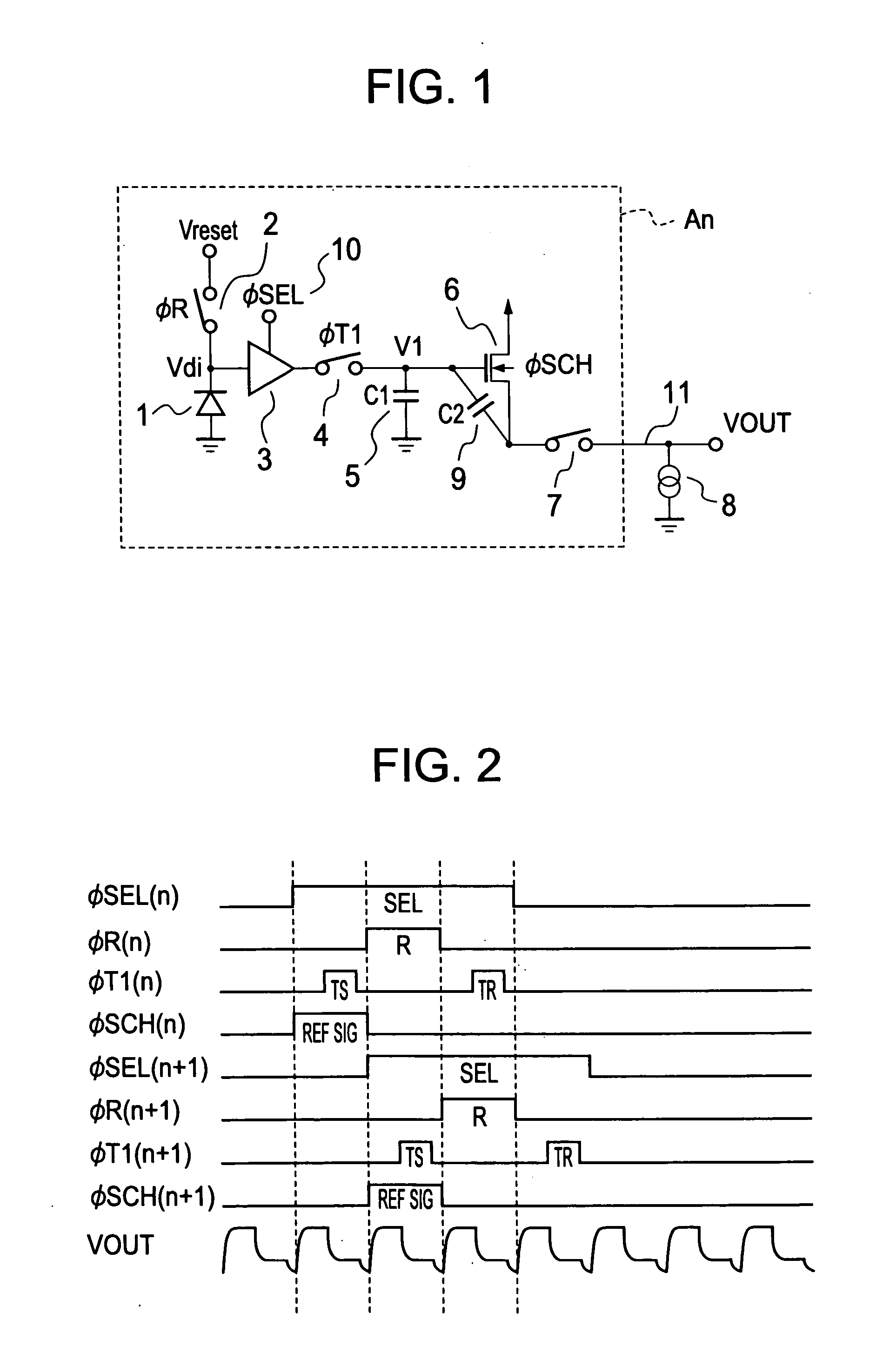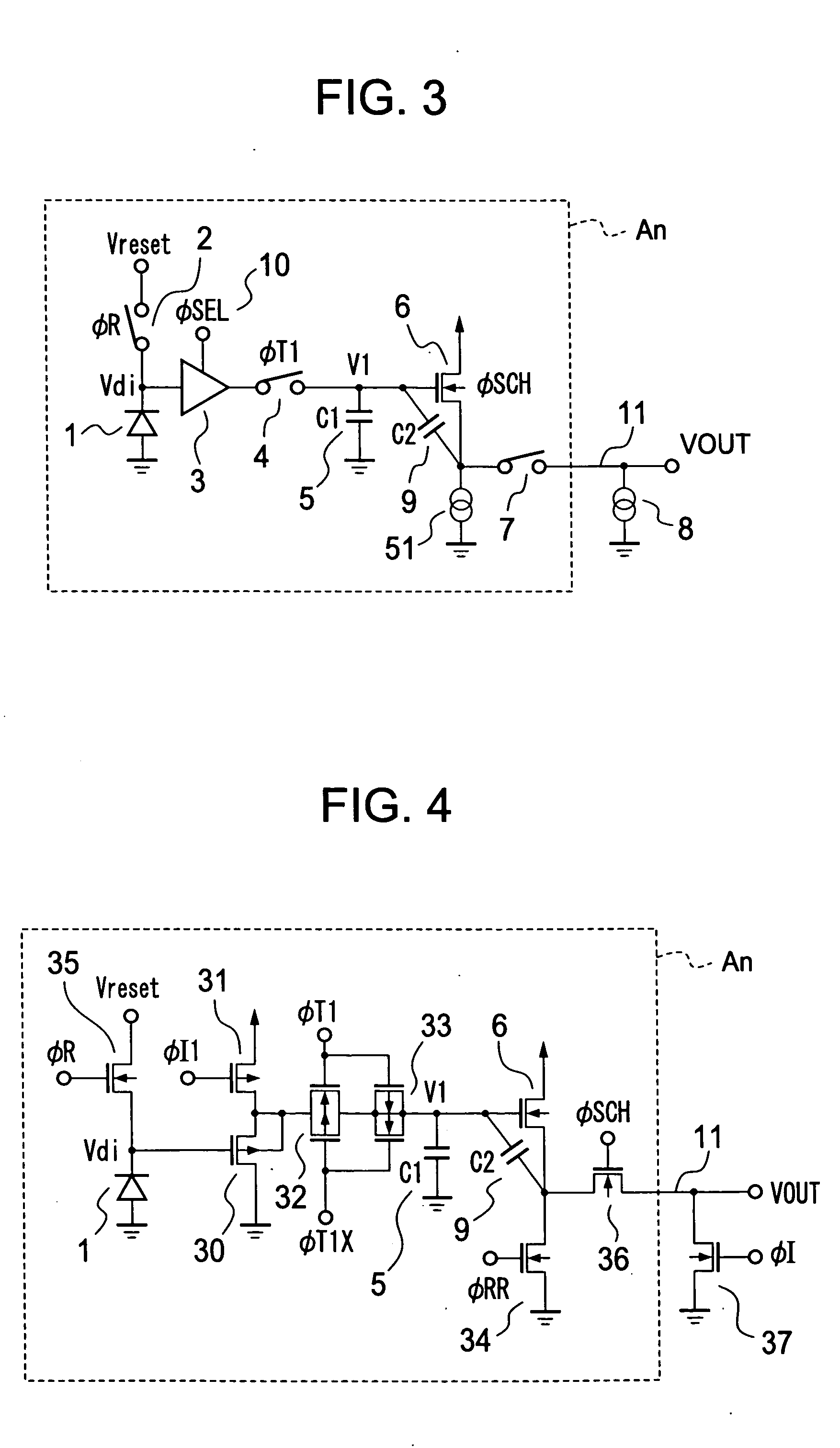Photoelectric converter and a method of driving the same
- Summary
- Abstract
- Description
- Claims
- Application Information
AI Technical Summary
Benefits of technology
Problems solved by technology
Method used
Image
Examples
first embodiment
[0036]FIG. 1 is a schematic circuit diagram of a sequential type photoelectric converter according to a first embodiment of the present invention. The sequential type photoelectric converter means a photoelectric converter for carrying out reset of electric charges and storage of photocharges in an output of each photodiode of an image sensor in parallel with each other while shifting a timing.
[0037] A photoelectric conversion block An shows a photoelectric conversion block of an n-th bit. The number of photoelectric conversion blocks is identical to the number of pixels, and the photoelectric conversion blocks are connected to a common signal line 11 through the respective channel selection switches 7. A configuration of a whole photoelectric converter is shown in FIG. 7.
[0038] A circuit of this embodiment includes: a photodiode 1 serving as a photoelectric conversion unit; a reset switch 2 serving as a reset unit; an amplification unit 3; a transfer switch 4 serving as an electr...
second embodiment
[0047]FIG. 3 is a schematic circuit diagram of a sequential type photoelectric converter according to a second embodiment of the present invention. A point of difference in configuration from FIG. 1 is that a second current source 51 is connected to a source of the MOS transistor 6. The second current source 51 is designed so that it is turned ON and OFF in accordance with an enable signal ΦRR, and while the second current source 51 is held in an ON state, a current which is substantially the same as that of the first current source 8 is caused to flow through the second current source 51.
[0048]FIG. 5 is a timing chart corresponding to the schematic circuit diagram of the sequential type photoelectric converter according to the second embodiment of the present invention.
[0049] At the time when the reset switch 2 is turned ON in accordance with ΦR(n), a voltage appearing at an output terminal Vdi of the photodiode 1 is fixed to a reference voltage Vreset. On the other hand, at the ...
third embodiment
[0061]FIG. 8 is a schematic circuit diagram of a batch type photoelectric converter according to a third embodiment of the present invention. The batch type photoelectric converter means a photoelectric converter for carrying out reset of electric charges and storage of photocharges in the output of each photodiode of the image sensor in parallel with each other and at the same timing. A photoelectric conversion block An shows a photoelectric conversion block of an n-th bit. The number of photoelectric conversion blocks is identical to the number of pixels, and the photoelectric conversion blocks are connected to the common signal line 11 through the respective channel selection switches 7. A diagram of a configuration of the whole photoelectric converter is shown in FIG. 7.
[0062] The circuit of this embodiment includes: the photodiode 1 serving as a photoelectric conversion unit; transfer switches 18, 19 and 20 each serving as an electric charge transfer unit; a reset switch 2 ser...
PUM
 Login to View More
Login to View More Abstract
Description
Claims
Application Information
 Login to View More
Login to View More - R&D
- Intellectual Property
- Life Sciences
- Materials
- Tech Scout
- Unparalleled Data Quality
- Higher Quality Content
- 60% Fewer Hallucinations
Browse by: Latest US Patents, China's latest patents, Technical Efficacy Thesaurus, Application Domain, Technology Topic, Popular Technical Reports.
© 2025 PatSnap. All rights reserved.Legal|Privacy policy|Modern Slavery Act Transparency Statement|Sitemap|About US| Contact US: help@patsnap.com



